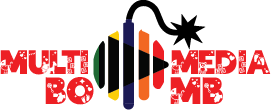digital marketing
Why Dance, Why Not – A Book Review on Dancing
Over the years, I’ve been very impressed with what Sir Ken Robinson has to say about creativity in our schools. He explains the problem with rote memorization, and seems to speak with the aversion that most Americans have with the No Child Left Behind legislation (NCLB). Some of my friends have called the NCLB Legislation; the No Child Allowed to Advance directive. I guess in some regards I do agree with that observation. In one of Sir Ken Robinson’s most famous TED Talk, he suggests that we ought to be teaching dance in our schools, yes dance.
Why you ask? Well, it is a creative exercise and it helps your brain develop and think. He’s right and now neurologists know why. The nerve endings are attached to nerves which run up the spinal column and right into the brain, it’s an extension of that system. In fact, if you’d like to learn more about all this, maybe I can save you some trouble in your personal research as I had recently asked myself some of these questions, trying very hard to confirm what many teachers and educators have speculated for decades. If this topic also intrigues you there are some very good books I’d like to recommend that you read;
Read more
http://networks786.ovh/read-blog/41614_alan-alda-039-s-never-have-your-dog-stuffed-izz-news.html
http://networks786.ovh/read-blog/41613_new-memoir-shares-honest-and-insightful-izz-news.html
http://networks786.ovh/read-blog/41612_autobiography-books-of-famous-personalities-in-izz-news.html
https://anynote.co/read-blog/32435_stroke-survivor-offers-insight-into-surviving-manga-online.html
1. “The Artful Mind: Cognitive Science and the Riddle of Human Creativity,” edited by Mark Turner, Oxford University Press, New York, NY, 2006, 314 pages, ISBN: 978–0-19-530636-1.
This book is a compilation of academically peer reviewed articles and essays on the topic, much of which has taken all the old works of white dead men famous psychologists and merged it with modern day neuroscience. Some of which proves what we inherently already know and have readily observed in case studies, other essays challenge the status quo and knowledge we thought we believed turning everything on its head. A very important set of reads for sure, for anyone researching this topic.
2. “Dance/Movement Therapists in Action: A Working Guide to Research Options,” edited by Robyn Flaum Cruz, Cynthia Florence Berrol, Charles Thomas Publishers, Springfield, IL, 233 pages, ISBN: 978-0-39-80750-40.
Read more
https://anynote.co/read-blog/32436_book-review-power-to-the-papal-manga-owl.html
https://anynote.co/read-blog/32437_new-book-shares-one-pastor-039-s-unique-s2manga.html
https://anynote.co/read-blog/32438_the-god-delusion-by-richard-zinmanga.html
https://anynote.co/read-blog/32440_book-review-the-bible-the-biography-by-karen-manga-buddy.html
Edited in a similar format, but the essays focus on what to do with all this new information and how to best utilize it for therapy. Not only does it do tremendous physical good, but it can be used creatively in therapy and learning to do wonders for cognitive ability, helping the student to overcome challenges and increase their ability to think. It all starts with a little dance. I hope when you get a change, you will choose to dance. Please consider all this and think on it.


